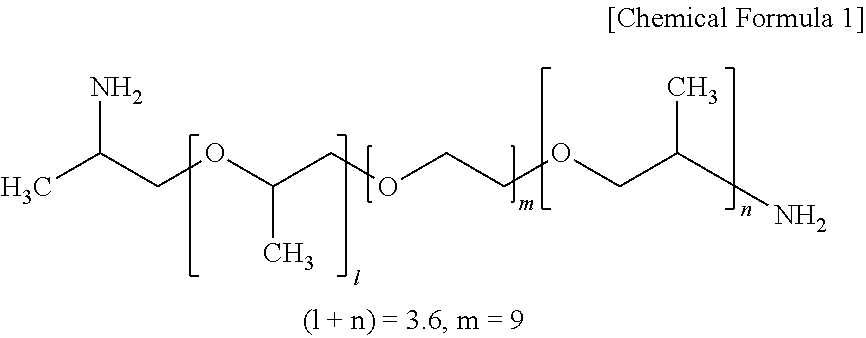Method for manufacturing carbonaceous luminescent material
a luminescent material and carbonaceous technology, applied in the direction of luminescent compositions, graphene, nano-carbon, etc., can solve the problems of difficult narrow-band emission, inability to obtain carbonaceous luminescent materials, and low yield, and achieve excellent emission characteristics, convenient synthesized, and high quantum yield
- Summary
- Abstract
- Description
- Claims
- Application Information
AI Technical Summary
Benefits of technology
Problems solved by technology
Method used
Image
Examples
working example 1
[0043]A solution was prepared by placing 0.67 g (3.1 mmol) of citric acid monohydrate, 0.33 g (2.72 mmol) of L-cysteine and 24 mL of deionized water in a 100 mL three-neck flask fitted with a Dimroth condenser and a thermometer. A stirrer and 0.05 g of Amberlyst 15 were added to the resulting solution and reaction was carried out for 95 hours under stirring and refluxing, giving an aqueous dispersion containing Carbonaceous Luminescent Material 1.
working example 2
[0044]A solution of 0.67 g (3.1 mmol) of citric acid monohydrate and 0.33 g (2.72 mmol) of L-cysteine dissolved in 24 mL of deionized water was placed in a 50 mL sample bottle. A stirrer and 0.05 g of Amberlyst 15 were added to the resulting solution. This system was placed in an inner Teflon® chamber mounted within a stainless steel autoclave, and the temperature was raised to 200° C. over 40 minutes. The pressure rose gradually and, 30 minutes after the temperature had reached 200° C., remained constant at 0.8 MPa. The system was reacted for 30 minutes in this state and then allowed to cool to room temperature. The brown-colored precipitate and the solid catalyst were removed with a 0.2 μm filter, giving a light yellow-colored solution. This gave an aqueous dispersion containing Carbonaceous Luminescent Material 2.
working example 3
[0045]A solution was prepared by placing 0.40 g (1.9 mmol) of citric acid monohydrate, 0.10 g (0.8 mmol) of L-cysteine and 0.5 mL of deionized water in a 100 mL three-neck flask. The resulting solution was impregnated into 0.05 g of Nafion (E.I. DuPont de Nemours & Co.), and reacted at 100° C. for 25 hours. The product was extracted from the Nafion with 10 mL of water, giving an aqueous dispersion of Carbonaceous Luminescent Material 3.
PUM
| Property | Measurement | Unit |
|---|---|---|
| quantum yield | aaaaa | aaaaa |
| wavelength | aaaaa | aaaaa |
| pore size | aaaaa | aaaaa |
Abstract
Description
Claims
Application Information
 Login to View More
Login to View More - R&D
- Intellectual Property
- Life Sciences
- Materials
- Tech Scout
- Unparalleled Data Quality
- Higher Quality Content
- 60% Fewer Hallucinations
Browse by: Latest US Patents, China's latest patents, Technical Efficacy Thesaurus, Application Domain, Technology Topic, Popular Technical Reports.
© 2025 PatSnap. All rights reserved.Legal|Privacy policy|Modern Slavery Act Transparency Statement|Sitemap|About US| Contact US: help@patsnap.com

